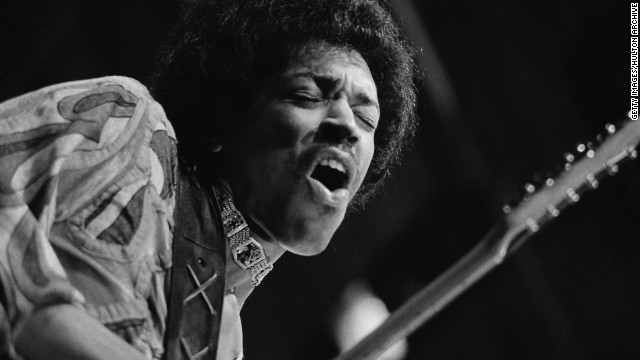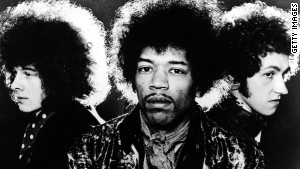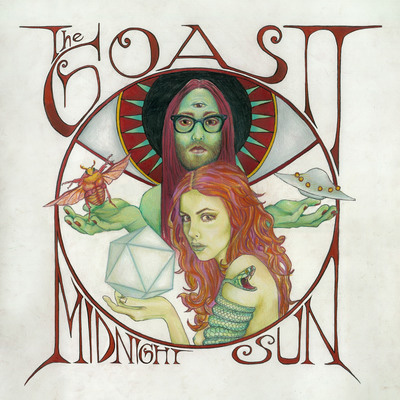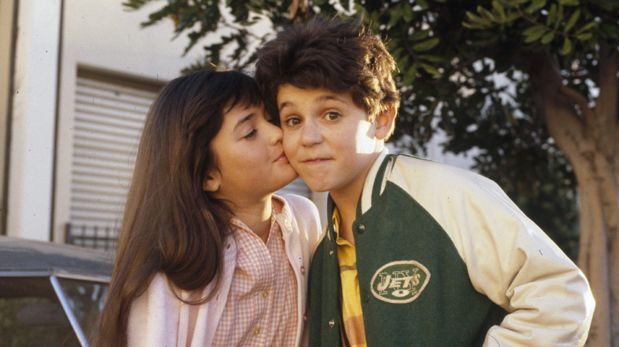By
John Blake, CNN
Take :
http://edition.cnn.com/2014/10/18/showbiz/jimi-hendrix-invisible-legacy/index.html?hpt=hp_c2
 He was called the greatest
electric guitarist, but Jimi Hendrix chafed at such labels. He was a
frustrated musician who wanted to learn how to read music, wished he
sang better and complained about not being able to play sounds he heard
in his head on his guitar. He eventually wanted to learn how to play
other instruments.
He was called the greatest
electric guitarist, but Jimi Hendrix chafed at such labels. He was a
frustrated musician who wanted to learn how to read music, wished he
sang better and complained about not being able to play sounds he heard
in his head on his guitar. He eventually wanted to learn how to play
other instruments.
The Jimi Hendrix you never knew
STORY HIGHLIGHTS
- Fans beginning to appreciate how Hendrix's race shaped his life and music
- For decades, audiences misunderstood the importance of guitar icon's heritage
- Blacks dismissed him as a musical Uncle Tom; whites only saw him as a stereotype
- But he was influenced by blues and R&B, as well as stinging racism, observers say
(CNN) -- Two weeks after closing Woodstock with his
reinvention of "The Star Spangled Banner," Jimi Hendrix decided to offer
a free concert for a group he called "my people."
He held a concert for an
African-American audience in Harlem, a place he once called home.
Hendrix's homecoming, though, was almost ruined as soon as he stepped
onstage. Someone threw a bottle at him that shattered against a speaker;
eggs splattered on the stage. Hendrix gamely played on while much of
the crowd melted away.
 The Sixties: How music shaped a decade
The Sixties: How music shaped a decade
"They didn't like him," says Charles R. Cross, who recounts the episode in his biography of Hendrix,
"Room Full of Mirrors." "He was jeered. People heckled him."
A new film focusing on a more triumphant period in Hendrix's life is rekindling interest in the guitar icon.
"Jimi: All Is by My Side"
shows how Hendrix left New York for London to become a star. Yet no
film has explored another twist in Hendrix's journey: How black and
white audiences misunderstood the importance of Hendrix's race, both to
the man and to his music.
Hendrix traveled to
Harlem because he was trying to connect with blacks who had dismissed
him as a musical Uncle Tom: a black man playing white man's music. Music
critics and biographers say Hendrix also was frustrated by legions of
white fans who only saw him as a racial stereotype -- a hypersexual
black man who was high all the time -- instead of a serious musician.
There are signs today
that more fans are starting to appreciate how Hendrix's race shaped his
life and sound. Yet he's still seen by many as a musical genius who just
happened to be black instead of a man whose genius was inseparable from
his race, says Jeremy Wells, author of "Blackness Scuzed: Jimi
Hendrix's Invisible Legacy in Heavy Metal."
Wells first noticed this
pattern when he examined how white heavy metal musicians and fans
described Hendrix. They rarely mentioned his race, or even said that his
music transcended race. Wells said he found that odd given Hendrix's
sound was steeped in the blues tradition of black guitarists such as
B.B. King and Muddy Waters.
"Nobody would say that
race doesn't matter for Muddy Waters," says Wells, an English professor
at Indiana University Southeast. "But there's a whole industry devoted
to saying it doesn't matter for Hendrix."
Race mattered more to
Hendrix than most people realize, critics and biographers say: He was
hurt by black radio's refusal to play his music; he experienced stinging
racism during his time as an R&B sideman and star; and some of his
most famous songs were profoundly shaped by his experiences as a black
man in America.
Are they reading too much race into Hendrix's music? Here are three reasons why they say Hendrix's race mattered.
He took black music to Mars
Hendrix was post-racial
before the term was even invented. Check out the photos from his four
years as a star, and he seemed to live in a virtually all-white world.
His two bandmates in the Jimi Hendrix Experience were white, his
audience was virtually all-white, and most of his girlfriends were
white. Hendrix even talked and dressed like a hippie, with his spacey
verbal references, crushed velvet pants and bandannas.
Now close your eyes and listen to the growling guitar and wolf howls that Hendrix unleashes on songs like
"Voodoo Child (Slight Return)," "Red House" and
"Machine Gun."
YouTube is filled with Hendrix's songs. He sounds like a black
guitarist who one music critic said took "the blues out of the
Mississippi Delta and sent it to Mars."
Jimi Hendrix's decision to play with white bandmates in his group, the Jimi Hendrix Experience, turned off black audiences.
What Hendrix described
as his "funky freaky" sound is drenched in blues. Hendrix spent his
formative years listening to black blues guitarists such as T-Bone
Walker and Curtis Mayfield. He honed his chops playing back-up to
R&B artists such as Little Richard and The Isley Brothers on the
"Chitlin' Circuit," a string of clubs in the segregated South that
hosted black performers.
"He was widely
understood to be the best R&B player of his time on the Chitlin'
Circuit," says Greg Tate, a musician and a journalist who has written
about Hendrix.
Hendrix expanded the
range of the electric guitar when he became a star. He coaxed sounds
from the instrument that no one had thought possible: "jet engines,
oceans, exploding suns, and planets, wounded wildebeests, weeping
seagulls," Tate wrote in an essay,
"The 12 Best Jimi Hendrix solos."
"The electric guitar is an instrument whose history can be divided up into two eras: before and after Jimi Hendrix," Tate wrote.
Yet no matter how far
out Hendrix's guitar sounded, the foundation of his music was always
black music, musicians and critics say.
Eric Gales, a guitarist featured in
Experience Hendrix, an all-star band touring the country playing Hendrix's music, says even on Hendrix's ballads, the blues seep through.
Listen to
"Little Wing,"
one of Hendrix's best-known ballads, he says. It's filled with little
guitar flourishes and a guitar tone that pay homage to Mayfield.
"Hendrix was not playing
white man's music," says Gales, whose new album, "Good for Sumthin,' ''
was released this month. "He took what was old traditional blues and
R&B and amped it up. When white people started doing it, it was
labeled their thing."
Hendrix's racial identity even suffused a song that at first glance had nothing to do with the blues.
His
classic take on "The Star Spangled Banner" at Woodstock
was noted for its sonic impact: Hendrix summoned the sounds of falling
rockets and bursting bombs from his guitar. Yet others heard something
more, a black man's protest. Hendrix played the song at the height of
the Vietnam War, where black soldiers were dying in high numbers. He
reportedly refused the pleading of his white business manager to forgo
performing the anthem for fear of provoking a riot.
Hendrix's interpretation of the national anthem was a protest on par with King's
"Letter from Birmingham Jail,"
says Wells, the English professor. Hendrix took a founding American
document and reminded Americans how far they had strayed from their
values.
"It was like Hendrix was
saying, 'This is my country. This is my national anthem,' " Wells says.
" 'Now look at what I'm going to do with it.' "
Hendrix was criticized for being unpatriotic after playing the anthem.
When he went on "The Dick Cavett Show" after Woodstock, he told the talk show host he thought his version was "beautiful."
"I'm an American, too," he told Cavett.
He was racially profiled
It might seem odd to
suggest that Hendrix's race was invisible to white fans; his skin color
was one of his selling points when he burst onto the American scene in
1967 with his performance at the Monterey Pop Festival in California.
He didn't want to be known as just a black musician, but he didn't want to be not known as a black musician.
-- Jeremy Wells, author
Hendrix may have been
the first black sex symbol American whites unabashedly embraced. At a
time when a black man could be killed for being with a white woman,
Hendrix was surrounded by white groupies, flicking his tongue and
grinding his guitar before thousands of cheering white girls.
These adoring fans
certainly noticed Hendrix's race, but what they saw was actually a
stereotype of the hypersexual black man that Hendrix played up for fame.
The press of his day extended the stereotype further. Rolling Stone
called him a "Psychedelic Superspade" while another magazine called him
the "Wild Man of Borneo."
Few of these white fans knew, though, how much Hendrix's life had been marred by racism.
Hendrix left his
hometown of Seattle because of racism, says Cross, his biographer. He
grew up in a world of abject poverty and family turmoil that was typical
of black families at that time. When he was a teenager, he was arrested
on dubious charges of driving in stolen cars and given the choice of
being jailed or enlisting in the Army, Cross says. He enlisted and
became a paratrooper.
"What happened to Jimi
would have never happened to a white male in that era," Cross says.
"Jimi was run out of Seattle for being black."
Hendrix continued to
experience racism as a musician. When he toured the Chitlin' Circuit, he
couldn't go to the bathroom at gas stations in the South because they
closed their doors to blacks. Even after he became a rock star, he was
still racially profiled. Cross tells stories of Hendrix being mistaken
for a bellhop in a swanky New York hotel, and of New York cabbies
refusing to pick him up.
Even the rapturous
reception Hendrix received when he traveled to London in 1966 for his
first big break was tinged with racism. Various biographies of Hendrix
noted that many of the white musicians he encountered had little
exposure to black people and had difficulty accepting Hendrix as a
superior musician. Some of their resistance to him was rooted in ego as
well as race.
One infamous story tells how Hendrix had to kill God before he was accepted in London.
The Almighty was, in
1966, incarnate in Eric Clapton, the guitarist for Cream. He was
considered so good that one graffiti artist in London declared, "Clapton
is God." When Hendrix arrived in the British capital, he shocked
onlookers by asking Clapton if he could join him onstage. Clapton
consented and Hendrix launched into a blistering version of "Killing
Floor," an up-tempo blues classic.
Clapton couldn't keep up and afterward stormed off the stage, humiliated.
"You didn't tell me he was this f***ing good," Clapton told Chas Chandler, Hendrix's manager.
After Hendrix died, some
white fans still had trouble accepting Hendrix's race, says Wells, the
music critic. Wells noticed that heavy metal artists hardly ever
mentioned Hendrix's race as they raved about his guitar. They could hear
his genius but they couldn't see his heritage.
That kind of adoration
would not have pleased Hendrix, Wells says."He didn't want to be known
as just a black musician," Wells says, "but he didn't want to be not known as a black musician."
He wanted blacks to celebrate his music
Before he held his ill-fated Harlem concert, Hendrix told a New York Times reporter why he returned to his old neighborhood.
Eric Gales, a performer on the "Experience Hendrix" tour, is one of a new generation of black artists influenced by Hendrix.
"Sometimes when I come
up here, people say, 'He plays white rock for white people,' " Hendrix
said. " 'What's he doing up here?' Well, I want to show them that music
is universal -- that there is no white rock or black rock."
Hendrix's quest for
acceptance among his own people was a lifelong journey. He first tried
to make it among black clubs on the Chitlin' Circuit, but his virtuoso
guitar playing didn't fit the black popular music taste of the time.
"There was no place for
Hendrix," Tate, the journalist, says. Black music then "was based around
the style of singing, harmony and production of Motown."
Hendrix even stopped by
black radio stations to encourage them to play his music to no avail,
says Cross, author of "Room Full of Mirrors."
"It was very upsetting to him that he was not accepted in African-American radio stations," Cross says.
Hendrix didn't want to
be confined by racial categories, but musical audiences were segregated
like the rest of America, Cross says.
"Because Jimi played to
white fans in an era of Black Power and separatism, they felt that he
had betrayed his own race by having a white band and playing to an
audience that was primarily white," Cross says.
Hendrix aggressively
reached out to black audiences during the last two years of his life. He
grew an Afro, wrote protest-themed songs and replaced his white
bandmates with two black friends to form the Band of Gypsies. The group
released a live album featuring Hendrix's classic, "Machine Gun."
The "Band of Gypsies"
album gave hints of a new musical direction for Hendrix. He had
befriended jazz musicians like Miles Davis who encouraged him to
stretch. (The two had discussed making a recording together.) Hendrix
was experimenting with larger bands, adding percussion and recording
songs that sounded like a cross between jazz fusion and funk music. He
told friends he was tired of the sexual showmanship and playing the
Psychedelic Superspade.
Still, it would be a
mistake to assume that Hendrix was on the verge of becoming a black
militant. Hendrix's racial identity, some say, was like his music: ahead
of its time.
There's one class
picture of a young Hendrix that might explain why. The elementary school
portrait is featured in David Henderson's biography,
"Scuse Me While I Kiss the Sky."
In it, a smiling, crew-cut Hendrix is surrounded by kids of all races:
Japanese, Filipino, Native American, white. Hendrix was raised in a
multicultural world -- he even had Native American blood.
Hendrix's high school was one of the most integrated schools in America in the 1950s, says Cross, his biographer.
"There was no school
more diverse in America than Garfield High," Cross says. "He grew up in a
world where race was not thought of as a barrier to music. It was not
thought of as a barrier to friendship."
Today at least some of the barriers to seeing Hendrix's blackness are starting to come down, some say.
Hendrix has been sampled
by hip-hop artists such as Public Enemy, A Tribe Called Quest and Frank
Ocean. Groups like the Black Rock Coalition talk openly about Hendrix's
influences. Rock, punk and metal are no longer seen as "white man's
music."
He took what was old traditional blues and R&B and amped it up.
When white people started doing it, it was labeled their thing.
-- Eric Gales, guitarist
"It's shifting," Cross
says of black perceptions about Hendrix. "I get letters every day from
young African-American men and women who say, 'Thank you for writing
this book.'" Hendrix is even being included among the pantheon of black
musical heroes. Previously, books and documentaries on great black
musicians would mention people like James Brown, John Coltrane and
Michael Jackson -- but not Hendrix.
That could be changing. Lamont Robinson created the
"Official R&B Music Hall of Fame Museum"
three years ago to honor black musical greats such as Whitney Houston,
Marvin Gaye and others. He's in talks with four cities to find a
permanent home for the museum by 2016.
Robinson says the museum
has already decided on its 2015 inductees, and Hendrix is one of them.
Blacks rejected him earlier, he says, but now more are starting to call
him one of their own.
"If you had to build a
Mount Rushmore to black music, you have to put his face on it," Robinson
says. "It would have to go up there with Michael Jackson, Aretha
Franklin -- he's right there."
Too bad Hendrix didn't live to see that day.
He died in London in
1970 after accidentally mixing too many sleeping pills with alcohol one
night. He choked on his own vomit in his sleep. He was 27.
Hendrix had just built
his own recording studio in New York and had spoken of taking time off
to learn how to read music and play other instruments. He had changed so
much from the shy unknown guitarist with acne who had come to Britain
four years earlier.
In "Room Full of
Mirrors," Cross recalls one of those magical moments in London when no
one really knew Hendrix but turned out to see him because they sensed he
was special.
Hendrix was playing at a
London club and much of rock's elite -- the Beatles, Clapton, Pete
Townshend, Jimmy Page and Jeff Beck -- walked in and sat on the front
row to listen to this guitarist from Seattle.
During a break in the
show, Brian Jones, one of the Rolling Stones' original leaders, ran into
another musician returning to the stage to hear more of Hendrix.
"It's all wet down front," Jones warned the musician.
The musician looked puzzled so Jones explained.
"It's wet from all the guitar players crying."
Forty years after his
death, it's still tempting to shed a tear listening to Hendrix -- not
just because of what we hear, but for all the sounds we will never hear
because he died so young.
 Mattes | Wikimedia (CC)
Mattes | Wikimedia (CC)
 He was called the greatest
electric guitarist, but Jimi Hendrix chafed at such labels. He was a
frustrated musician who wanted to learn how to read music, wished he
sang better and complained about not being able to play sounds he heard
in his head on his guitar. He eventually wanted to learn how to play
other instruments.
He was called the greatest
electric guitarist, but Jimi Hendrix chafed at such labels. He was a
frustrated musician who wanted to learn how to read music, wished he
sang better and complained about not being able to play sounds he heard
in his head on his guitar. He eventually wanted to learn how to play
other instruments.
















